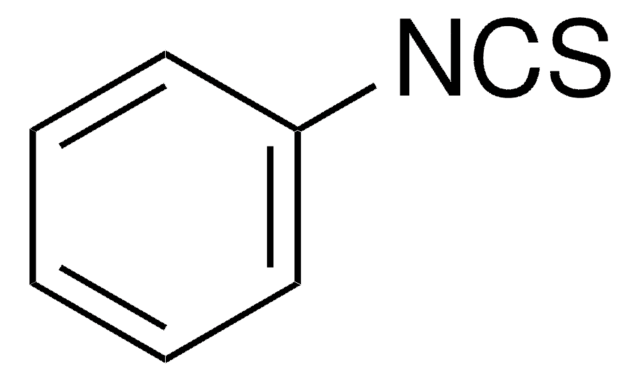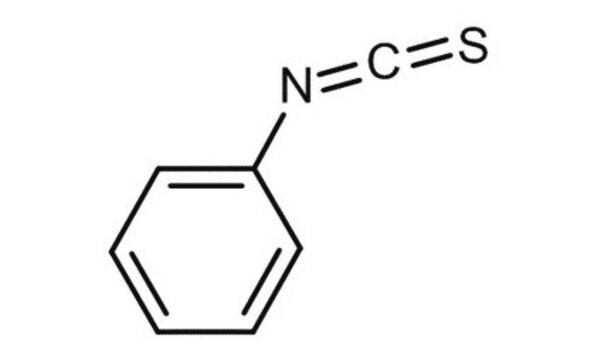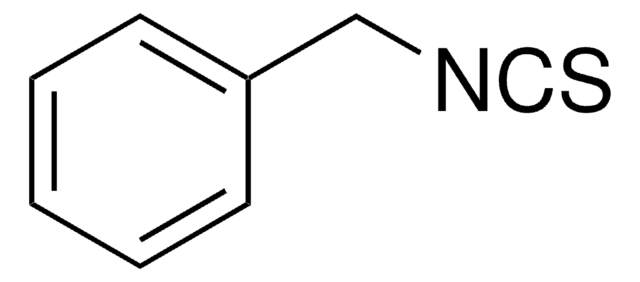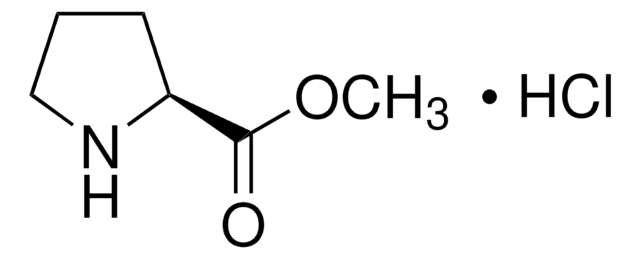P1034
Phenyl isothiocyanate
Sigma Grade, 8.36 M, suitable for solid phase protein sequencing analysis, ≥99% (GC), liquid
Sinônimo(s):
PITC
About This Item
Produtos recomendados
grau
Sigma Grade
Nível de qualidade
Ensaio
≥99% (GC)
Formulário
liquid
concentração
8.36 M
índice de refração
n20/D 1.6515 (lit.)
p.e.
218 °C (lit.)
pf
−21 °C (lit.)
densidade
1.132 g/mL at 20 °C (lit.)
adequação
suitable for solid phase protein sequencing analysis
temperatura de armazenamento
2-8°C
cadeia de caracteres SMILES
S=C=Nc1ccccc1
InChI
1S/C7H5NS/c9-6-8-7-4-2-1-3-5-7/h1-5H
chave InChI
QKFJKGMPGYROCL-UHFFFAOYSA-N
Procurando produtos similares? Visita Guia de comparação de produtos
Descrição geral
Aplicação
Embalagem
Ten mL size packaged in screw cap amber vials under argon.
Palavra indicadora
Danger
Frases de perigo
Declarações de precaução
Classificações de perigo
Acute Tox. 3 Oral - Resp. Sens. 1 - Skin Corr. 1B - Skin Sens. 1
Código de classe de armazenamento
6.1A - Combustible acute toxic Cat. 1 and 2 / very toxic hazardous materials
Classe de risco de água (WGK)
WGK 3
Ponto de fulgor (°F)
190.4 °F - closed cup
Ponto de fulgor (°C)
88 °C - closed cup
Equipamento de proteção individual
Faceshields, Gloves, Goggles, type ABEK (EN14387) respirator filter
Escolha uma das versões mais recentes:
Já possui este produto?
Encontre a documentação dos produtos que você adquiriu recentemente na biblioteca de documentos.
Os clientes também visualizaram
Nossa equipe de cientistas tem experiência em todas as áreas de pesquisa, incluindo Life Sciences, ciência de materiais, síntese química, cromatografia, química analítica e muitas outras.
Entre em contato com a assistência técnica












